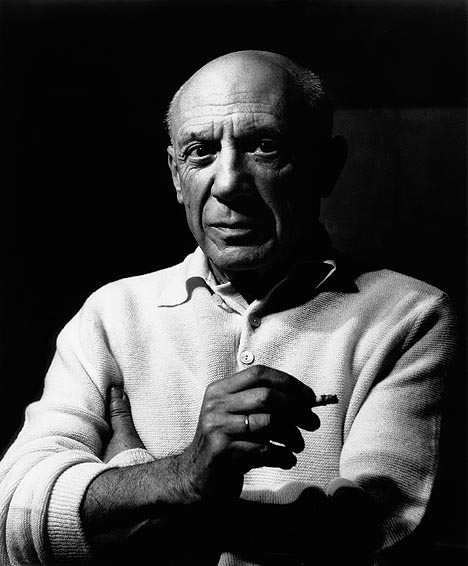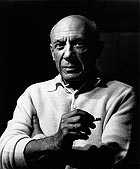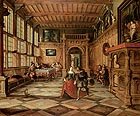
translated and summarized by: Liz Wollner-Grandville,
Engish Summary June 22 - 28
Halle für Kunst: Space Revised #3 – “What if This Was a Piece of Art?”
On mediality, location and transformation
With “Space Revised #3. What if This Was a Piece of Art?” the Halle für Kunst Lüneburg turns into a venue allowing critical contemporary debate regarding Marcel Duchamp’s work. To which extent is it possible to utilize space as a platform for a multitude of reflections and interpretations? Can art be apprehended without having an aura or will it be overlooked? The curators Eva Birkenstock and Hannes Loichinger bring up the question how art qualities can flourish in a biotope of theory. Space needs medial interventions, to (re)search for their predefined structures, options, and boundaries within a context. The differences between everyday objects and art are made transparent by the following contributions.
“Composition Trouvée” by Guillaume Bijl (1946) consists of four wall clocks, which were positioned on top of each other to form a meticulous composition. In “No Space Between the Worlds” (1966) Wolfgang Breuer mounts a slowly rotating one- meter long neon lamp on a bunk ceiling. The 27-minute video installation “Side Effects” by Yan Duyvendak (1965), presented on four different TV sets, shows a static take of the same room, but with varying lighting and changing arrangements of the fixtures.
Graham Hudson’s (1977) installation “Who Gets What, When and How” consists of mid-sized cardboard cartons, measuring tapes, and water scales. Since 2002, the art initiative FLOSS focuses on topics pertaining to art, science and literature. In the “Kunstmarkt TV” (art market TV) Christian Jankowski (1968) reflects the linked operating system of institutions and marketing strategies. The 45-minute video was created as a live-performance during the Art Cologne 2008. For Benoit Maire (1978), it is important to eliminate the categorical division between art and philosophy. With the help of language and writing Falke Pisano (1978) researches an artistic practice, which deals with the interaction of abstraction and sculpture.
“What if This Was a Piece of Art?” shows examples of theoretical and applied positions, offering a concrete answer to the current debate on “art associations and how they are perceived by the educated society”. Touring through rooms and thereby questioning artistic strategies and their potentials are the basic impulses of the “Space Revised” project, shown in four Northern German venues. Appropriation of space, loss of space, shift of space as well as institutional space compose the perspectives realized by the cooperation among the GAK Gesellschaft für Aktuelle Kunst Bremen, the Künstlerhaus Bremen, the Halle für Kunst Lüneburg and the Kunstverein Harburger Bahnhof Hamburg.
By Leon Gumil Hainzl
Halle für Kunst
21335 Lüneburg, Reichenbachstrasse 2, until 12. 07.09
www.halle-fuer-kunst.de
Parallel exhibitions on “Space Revised”
Space Revised #1 – Friendly Takeovers
Gesellschaft für aktuelle Kunst, Bremen
www.gak-bremen.de
Space Revised #2 – Whereabouts Unknown
Künstlerhaus Bremen
www.kuenstlerhausbremen.de
Space Revised #4 – Manufactured Communities
Kunstverein Harburger Bahnhof, Hamburg
www.kunstvereinharburgerbahnhof.de
Kunsthistorisches Museum: Raum im Bild (Room in paintings) – Interiors from 1500 to 1900
Chamber music of symphonies?
Admittedly, it is difficult to set something against the aesthetic presentation style during the Era Seipel. Everyone was therefore eager to see what the first exhibition under the new director Sabine Haag at the Portrait Gallery of the Art History Museum would be like. And, indeed, it was surprising.
The presentation of the 35 works on “Images of Space – Interiors from 1500 to 1900” turned out to be a kind of “home match”. Both an EU project and a recently finalized publication by Karl Schütz, the director of the Portrait Gallery, formed the background.
In comparison to portrait, landscape, genre paintings, and still lifes, interiors are not among the classic categories of painting. One can easily detect cross connections among the selection of the presented interiors – e.g. by comparing Carl Moll’s painting with Johannes Vermeer’s “The Art of Painting”, or Jacob Alt’s with Caspar David Friedrich’s “View from his Studio”.
However, renowned paintings are now presented in an unspectacular manner on the sage-green walls. Compared to Seipel’s definitely more joyful staging, the now traditional hanging at first comes across as rather musty, and on second view as almost provocative. One important piece of art lined up next to the other - all presented in an extremely reserved way. Pure understatement. The expressiveness of the works is meant to speak for them.
Will we in future have to get used to a renaissance of musty museums?! Or is this meant to be an intellectual chess move? Is one toying with the idea that the paintings are set in a relationship to their surroundings? And does the topic “Rooms in a painting” underline the nexus “Room in a painting in a room”?
And something else is different: not one painting came from outside Vienna. Even all the loans came from close-by : from the Academy of Fine Arts, the Albertina, the Belvedere, and the Liechtenstein Museum.
The time of presentation – from 1500 to 1900 as well as the integration of aquarelles, and thereby assimilating to neighbouring institutions in Vienna, can be viewed as additional innovations. However, the emphasis laid on (aquarelle) painting around 1900, following that of The Netherlands of the 16th and 17th century, remains a mystery.
By Maria-Gabriela Marinkowic
Kunsthistorisches Museum
1010 Vienna, Burgring 5, until 12.07.09
www.khm.at
Knoll Galerie Wien: Csaba Nemes – Every day is 1956
Revolution - every day
The video “Puhányok” (softies), by the Hungarian artist Csaba Nemes, born 1966, is definitely nothing for softies. The 17-minute video, shown next to his paintings in the Knoll Gallery, is set in Budapest and features the fictitious assault of two men (Tenkes and Kenó) on a Jewish student, who, in front of the camera, is forced to swear a National Socialist oath. The brutality is demonstrated less by physical but much more by psychological violence. The framework plot is the interview of Tenkes by a team of journalists. Flashbacks reconstruct the progression of events.
The roles of the victim and the offenders are distinctively distributed. But the attempt to describe the guys represented here, their aims and values, ends in contradictions. According to Nemes, all those in the video are softies. Their weakness does not exclusively refer to their character properties, but to the expansibility of certain (political) terms. Tenkes offers no clear answers to any questions. He does not allow himself to be pinpointed by any motif or political attitude. This mental vacuum is additionally supported by the venue at which the interview takes place – the apartment does not belong to Tenkes, it’s an undefined place where he is currently staying. In the otherwise empty room, a bicycle leans against the wall. For the protagonists, standing in for “Hungarian values” and at the same time taking part in “critical mass” demonstrations for a greener Budapest, do not rule each other out.
Anti-Semitism and hostility against homosexuals, but also the complex relationship of publicity and representation, taking over roles and their medial processing are important topics of this multi-layered work. Csaba Nemes creates art, which is strongly characterized by the current local socio-political conflicts, but has a chronological as well as geographical overarching relevance. In Hungary’s current situation, he continuously discovers new conflicts and points of friction.
By Katja Melzer
Knoll Galerie Wien
1060 Vienna, Gumpendorfer Strasse 18, until 31.07.09
www.knollgalerie.at
Joie de vivre with Picasso
Even if there is no anniversary to mark a certain decade, it doesn’t really matter: every year can be a Picasso year. Therefore, 2009 is now the Picasso Year – with four large exhibitions of his life stages in Southern France: Arles and Avignon (1914), Ménerbes (1946), St. Tropez (1951) and Cannes (1955) to Antibes, respectively Mougin (1961-1973).
Until the beginning of 2010, the “Hommage à Picasso” presents his works as huge projections onto the 4000 m2 rock walls of the famous quarry of Les Baux – the same location where Picasso took part in Jean Cocteau’s “Testament d’Orphée”, the “Cathédrale d’Images”.
Not only the legendary Café “Les deux Garcons” and its famous guests, which included Mistinguett, Charles Trenet, Edith Piaf, Alain Delon, Darius Milhaud, and of course Picasso, lure one to the city of Aix, but also the large presentation on Picasso/Cézanne at the Musée Granet. In a space of 1000 m2, Picasso’s works are juxtaposed to those of Cézanne. And since Aix is more Cézanne’s city, visitors should not miss out on the Cézanne-Walk with its 34 points of interest, ranging from the house where he was born to his gravesite, as well as his studio in Les Lauves, his residence “Le jas de Bouffan”, and the Bibémus Quarry, one of Cézannes favourite places to work.
The Chateau de Vauvenargues near Aix is also among the highlights of the Picasso Year. In 1958, the artist purchased this 17th century castle, which he – on account of the fabulous view towards Montagne Sainte Victoire - Picasso described as a “natural Cézanne”. He lived there until 1962 and was buried beneath the sculpture “Femme au vase” in the Chateau’s park, which he created in 1933.
From June 27 to October 12, the “Picasso – Museum War and Peace” in Vallauris presents the exhibit “Tell me, Blaise… Picasso and Blaise Cendrars”. Next to the permanent exhibition of the former castle chapel, where Picasso painted his War and Peace cycle, one can explore the mutual influence and friendship between Picasso and Cendrars.
The Picasso-Museum at the Grimaldi Palace in Antibes is showing the exhibition “1945 – 1949: l’ère du renouveau” (time of renewal) with 150 works from public and private collections. The “period of Antibes” was a time of exuberance, something clearly characterized by his large painting “La joie de vivre”.
By Iris Meder
Picasso in the Provence
www.picassoenprovencecotedazur.com
Picasso at the Musée Granet, Aix
www.picasso-aix2009.fr
www.museegranet-aixenprovence.fr
Cathédrale d’Images
www.cathedrale-images.com
Picasso Museum Vallauris
www.musee-picasso-vallauris.fr
Picasso in Vauvenargues
www.vauvenargues.org
Mehr Texte von translated and summarized by: Liz Wollner-Grandville


 Teilen
Teilen





